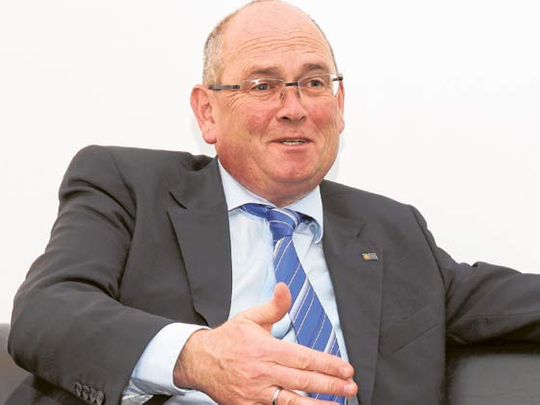
Dubai: The Lufthansa Group, which comprises six partner airlines, is investing millions of euros to overhaul its aircraft interiors and come up with a fresh feel for the fleet.
The upgrade of the fleet will be completed by the end of the year, bringing 32,000 new seats on over 180 short- and medium-haul aircraft.
While the investment in the fitouts across its First, Business and Economy class would be approximately €170 million (Dh847 million), the Middle East territory will also play a significant role for the German aviation major.
Dubai International Airport will have a new lounge for Lufthansa by mid-2011. The Senator Lounge costing €1 million is part of a stream of new facilities marked for key destinations in its global network.
The group is also waiting to receive another 11 Airbus A380 aircraft to add to the four already in service. Also to be included soon are 20 Boeing 747-8i and 67 A320s.
The Lufthansa Group has €14.5 billion worth of aircraft on order, with delivery of 150 scheduled between 2010 and 2016.
In addition to the new seats, the group will equip its aircraft on inter-continental routes with Flynet, which allows broadband internet on board with WLAN [wireless local area network] and text messaging service.
Joachim Steinbach, Vice-President of Sales and Services for South East Europe, Africa and Middle East, spoke to Gulf News about the group's plans and expectations over the next few years.
In 2010, Lufthansa saw a year-on-year growth on all routes, with a 10 per cent increase in passenger numbers. The UAE and Europe sectors grew by 13 per cent. The trend going forward is for continued growth, Steinbach said.
Gulf News: Which new destinations are you looking at this year? Will there be any capacity increase for the region?
Joachim SteinbacH: In 2011, we're looking at Iraq as an option. If we can do Baghdad this year, it is definitely the next project in this region.
From 2005, we've consistently increased capacity to the region. We've reached a point that there are no more markets that we can go to. We have 99 weekly flights to 13 cities. Swiss International Airlines adds another 14 weekly to three cities.
Lufthansa recently stopped its flights to Yemen due to security issues. How would that be different from issues in Iraq if and when you enter that market?
We're continuously looking at the situation. Sana'a is still on our list if it opens for us and we are potentially allowed to fly there. Sana'a cannot be compared to Baghdad. If there is one thing that is safe in Baghdad, it's the airport. It's completely fenced and secure.
What is your growth outlook for 2011?
For the group, the outlook is a 15 per cent increase in capacity and for the region, it's 10 per cent. We're looking at more shares for Africa, where we constantly opened up new destinations.
The Middle East is stable with a slight growth. We're expecting to maintain growth on the same level. Our new Economy class will bring stable business and a 17 per cent growth because of it. The carrier saw 90.2 million passengers in 2010, looking ahead to an expected net profit of €800 million.
What is your take on Emirates airline's traffic rights into Germany?
The traffic rights are done between governments and not airlines. Governments decide independently.
We do work together but not to the points that the Federal government will represent Lufthansa Airlines. It might be different with the Canadian government and Air Canada, but in our case, it's relatively independent. Germany is the most liberal of European countries.
It is almost open skies. The UAE has 70 weekly flights to Germany. Emirates can go to Berlin, if it wants to, according to negotiations. Emirates or Etihad can add more flights to Germany if they want to.
If Emirates and Etihad were to bring more passengers to Germany, wouldn't it help Lufthansa subsequently as more passengers would fly with it to North American destinations?
We have a hub-and-spoke system. Our target, as any other airline, is to fly as many passengers and then distribute them to other destinations.










